THE BMW iX it's the Bavarian answer to shortening distances for rivals Audi and Mercedes-Benz, who already have a top-of-the-range electric SUV. This, despite the fact that, in 2013, it was the first of the premium brands to start the electric offensive when it launched the i3 city dweller, with an innovative formula (ultra-light construction in carbon fiber), but some zigzags in the strategy dictated that it be surpassed.
Eight years later, we're ready to be the first to drive the iX, having as “co-pilot” someone who knows it like the back of their hands: Johann Kistler, the project director for the new model that's just now on sale. before the end of this year.
It's true that BMW already has a smaller electric SUV for sale — the iX3 that we've also tested — but the new iX turns out to be more relevant not only for its positioning but also because it has a new platform that even starting from the CLAR base (used in the Series 3 and X3 upwards), it was profoundly changed, namely with the inclusion of part of the carbon fiber construction (roof, rear section and in the area surrounding the batteries).
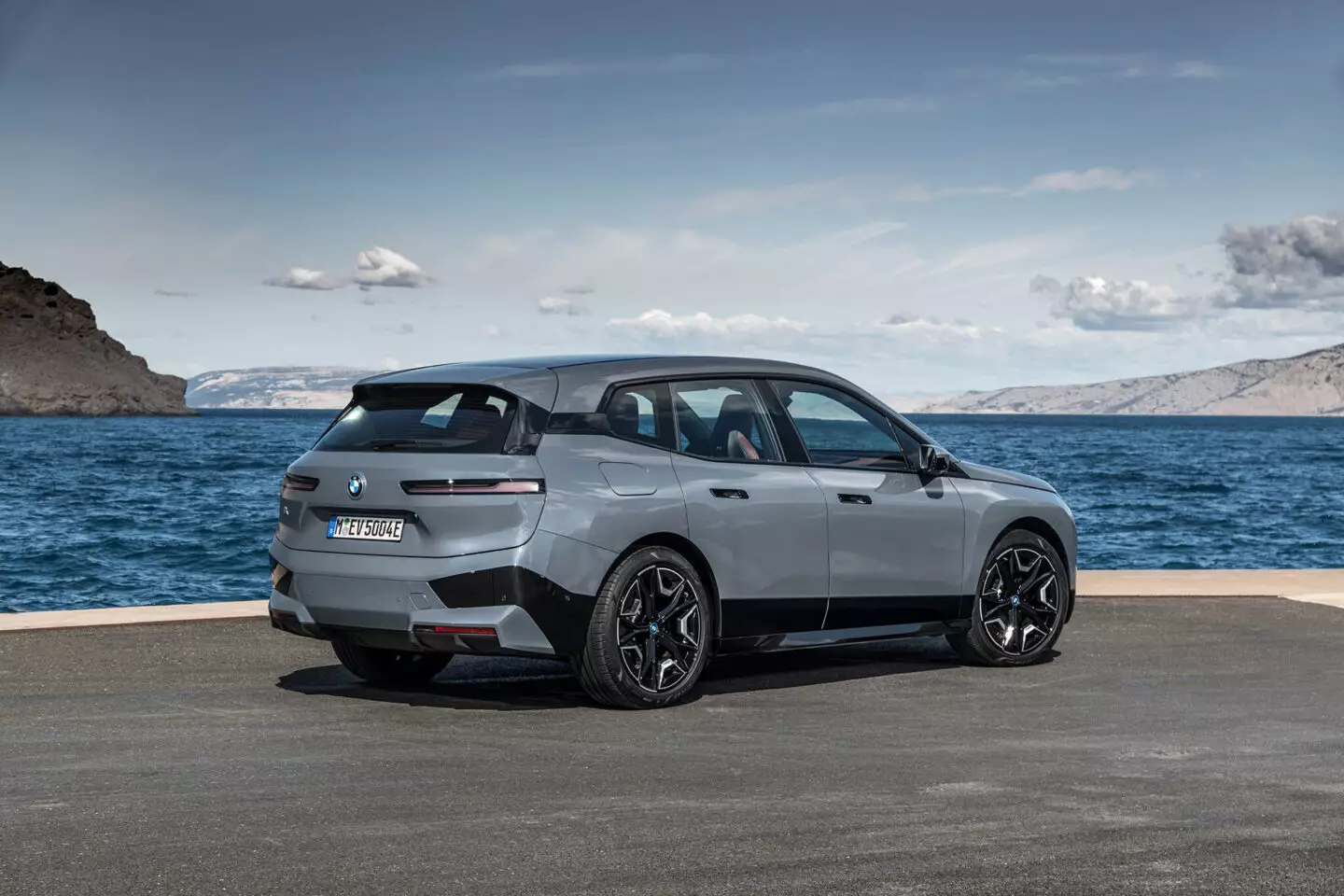
More advanced batteries
The iX will be produced in Dingolfing, alongside several other models of the German brand, where lithium-ion batteries are also mounted, which use a more advanced generation of chemistry, with an energy density that is around 30% higher than that of the latest i3 batteries, introduced last year.
Kistler stresses the importance of the iX also for being the model that debuts this technical base: “it is a kind of antechamber for the launch of several new large-scale 100% electric models, among which the future 5 Series and 7 Series and anticipates a lot of what these vehicles will be.”
There are two battery sizes: 71 kWh for the xDrive40 and 105 kWh for the xDrive50 (both values refer to the payload), either with a warranty of eight years or 160,000 km, the first one can be charged to a maximum power of 150 kW and the second at 200 kW, in direct current (DC). In alternating current (AC) the maximum is 11 kW.
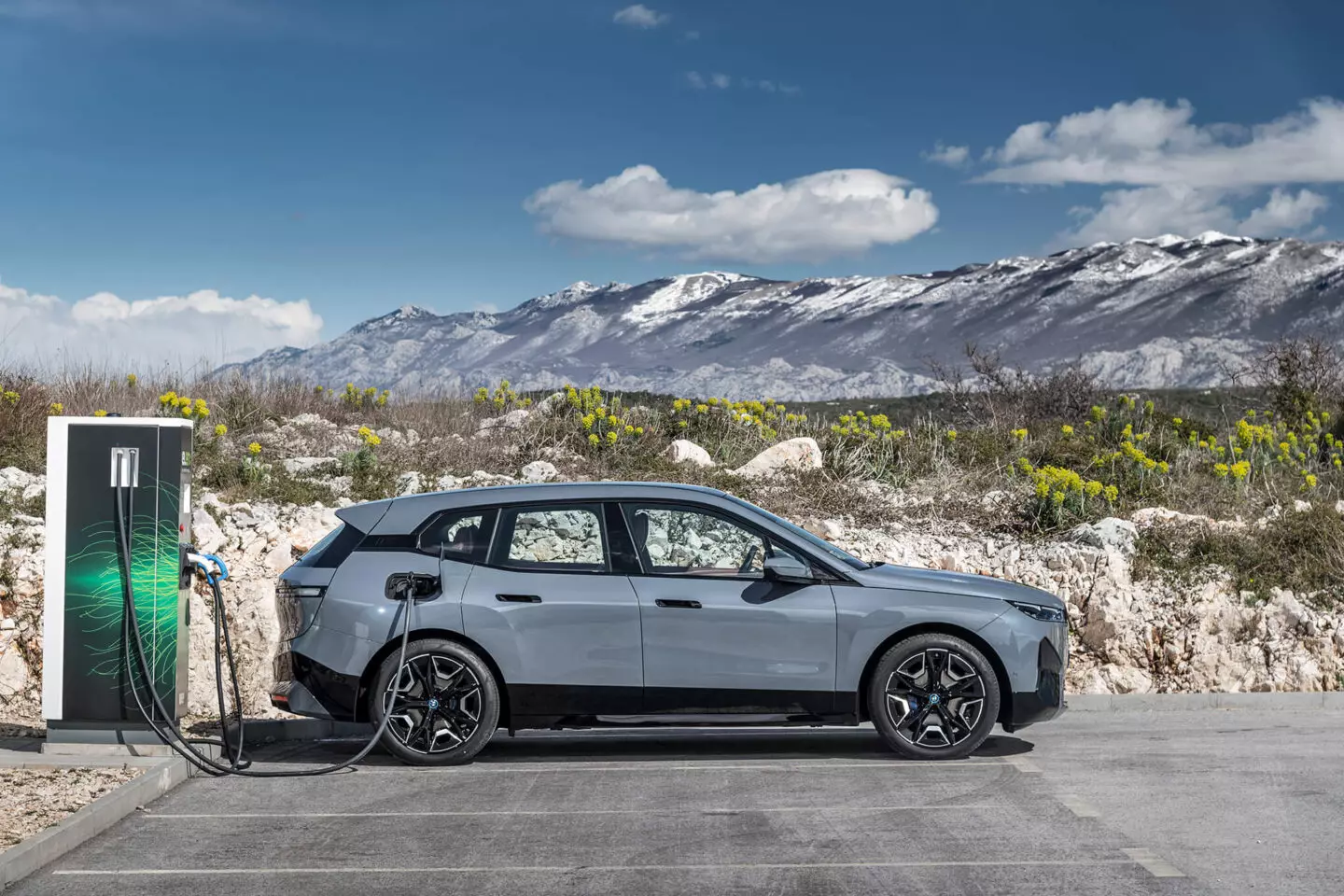
Translated into charging times we speak of eight hours for a full load at 11 kW and 31 minutes from 0 to 80% at 150 kW for the xDrive40 and, respectively, 11 hours (AC) and 35 minutes (200 kW) for the xDrive50. With 10 minutes of charging at full power (each version) autonomy of 95 km and 150 km can be added, respectively.
Strong visual impact
Even though the shapes of the iX have been known since the Vision iNext concept car (Paris Salon, 2018), what is certain is that its visual impact is strong.
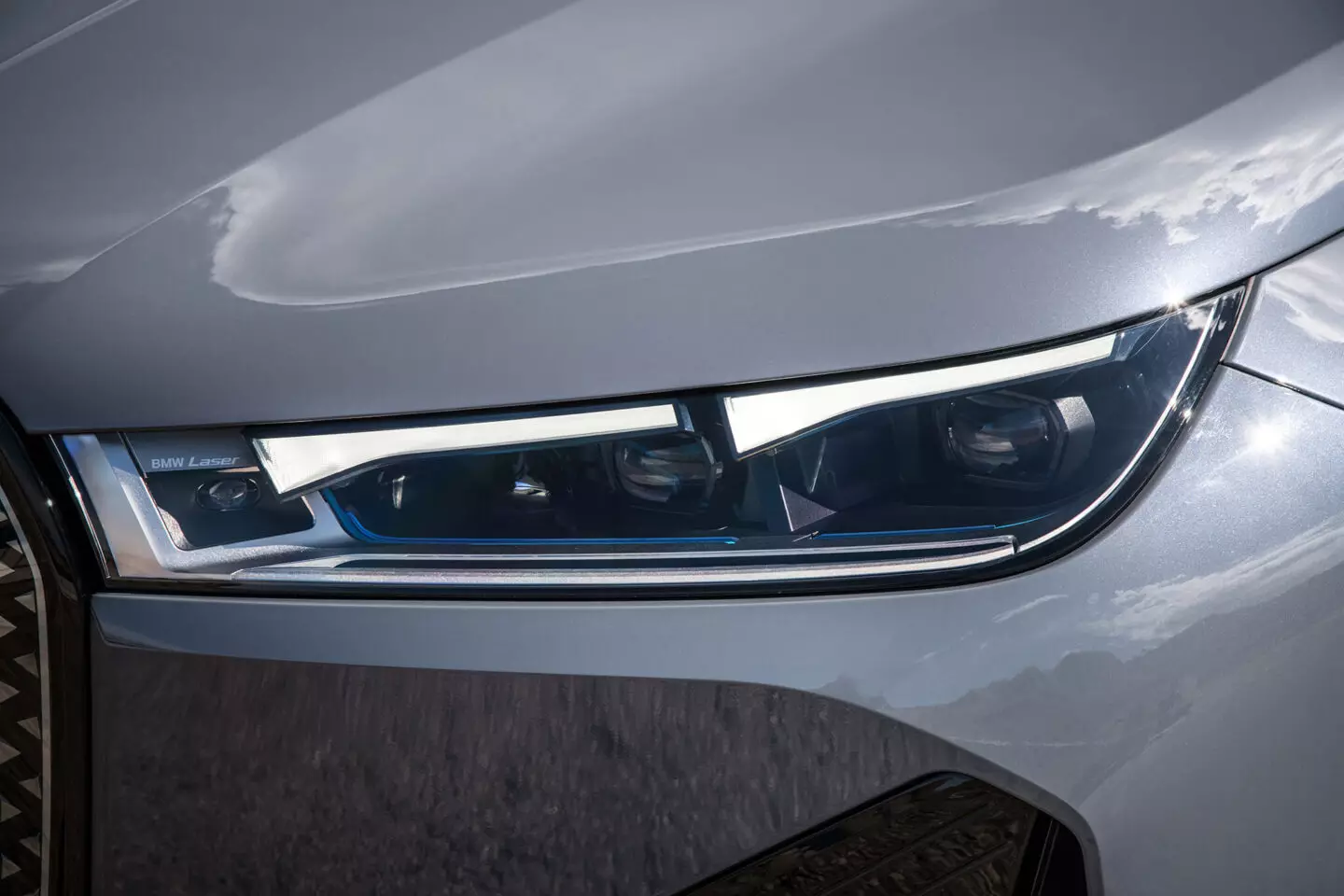
Be it the shorter than normal hood (it's the first BMW with a fixed hood, which only opens for maintenance interventions), the rounded rear (reminiscent of several Audi SUVs) or the very generous glazed surface or even the larger double kidney ever seen in a BMW (it serves more to hide the paraphernalia of radars and sensors than for cooling purposes, as the cooling needs of electric cars are far less than those that use combustion engines).
Its dimensions are close to those of an X5 (only a marketing decision called it iX and not iX5): just 3 cm longer (4.95 m), almost 4 cm narrower (1.97 m) and 5 cm shorter (1.69 m) and an almost identical wheelbase (only 0.8 cm longer on the iX, which have the axles spaced exactly three meters apart).
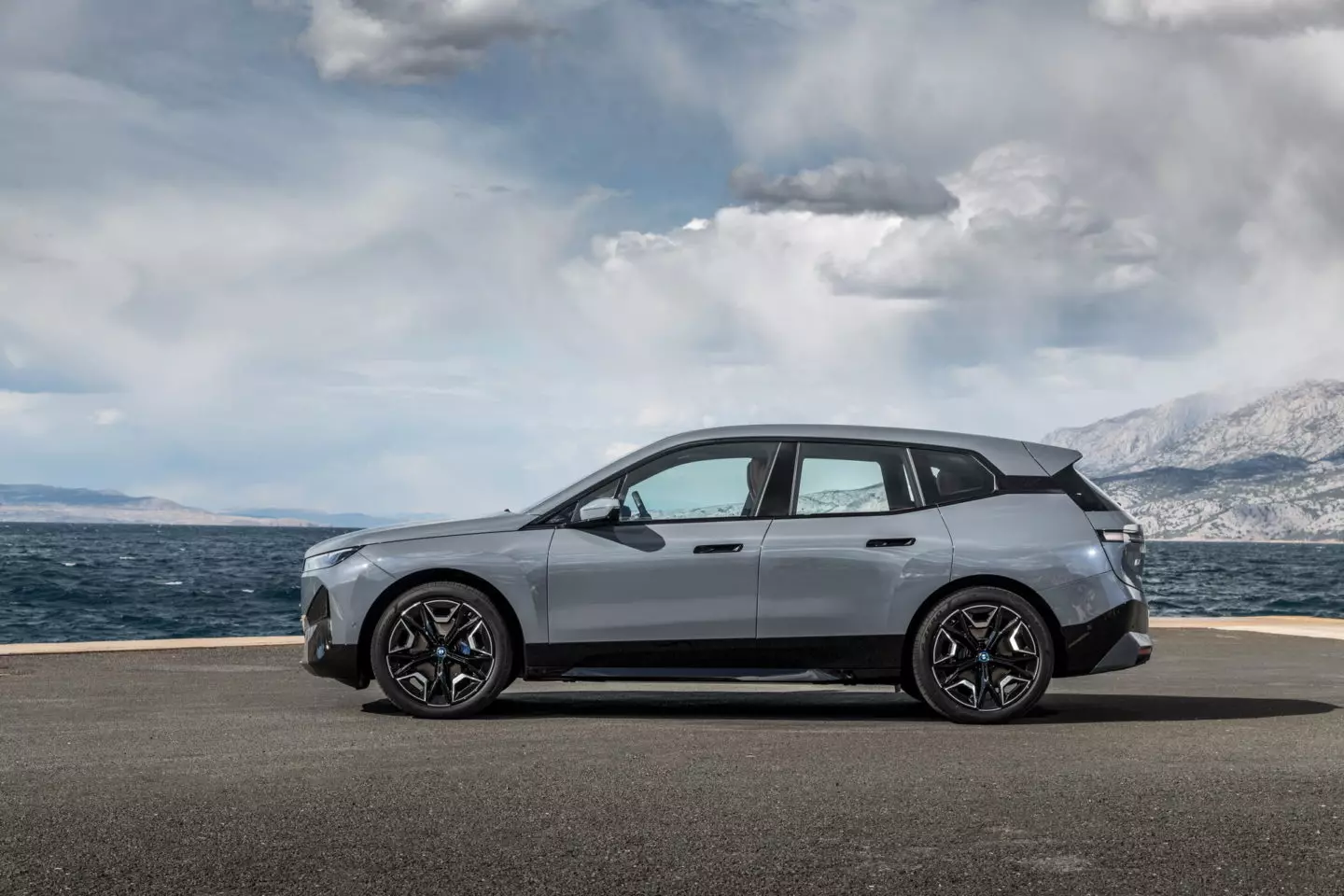
Going through the "wind holes"
Any vehicle makes less effort to “prick the air” the lower its drag coefficient, and in trams this is even more critical as it translates into additional kilometers of autonomy for each charge.The iX has interesting solutions such as the door handles on the body face (which open electronically when it feels the user's hand), the unframed windows and the closed grille (with motorized shutters that open when there is a need for cooling). The achieved 0.25 Cx equals the previous class leader in aerodynamics, the Tesla Model X, and trumps two other respected rivals, the Audi e-tron (0.28) and the Mercedes-Benz EQC (0.29). .
Interior with a concept car feel
I open the front passenger door and notice that the floor of the car is higher (the huge battery is placed underneath) and that the threshold of the door is narrower, and you can see the carbon fiber construction “peeking out” .
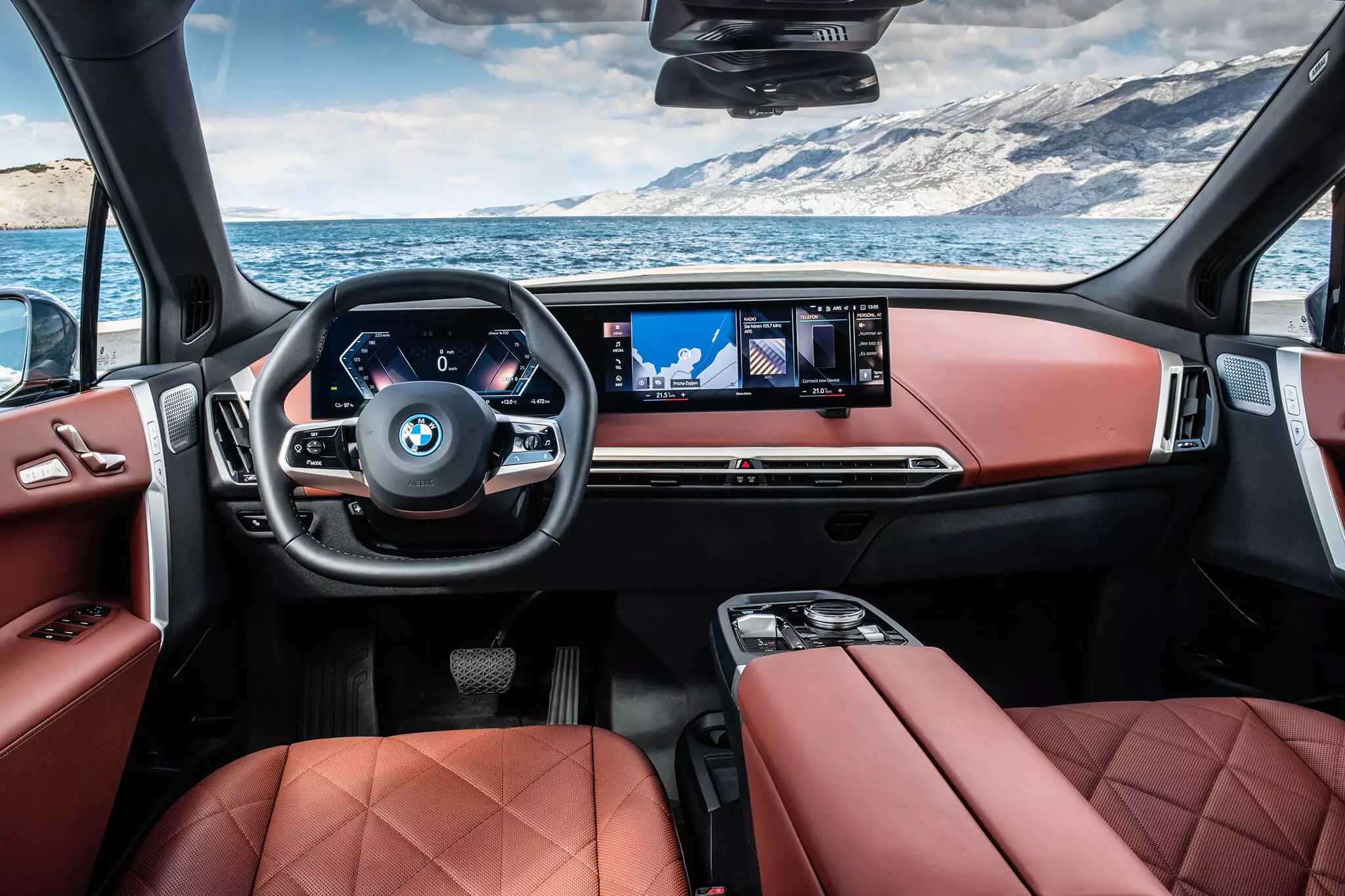
The seats are also taller (for the same reason as the floor) in addition to having less lateral support and more lounge chair look than is traditional at BMW. The dashboard is unusually low for a BMW, as well as looking as minimalist as it is futuristic.
The total highlight goes to the horizontal and curved tablet, which unites two different screens, for the instrumentation (14.9”) and the infotainment (12.3”), and for the hexagonal steering wheel, which helps to reinforce the futuristic look.
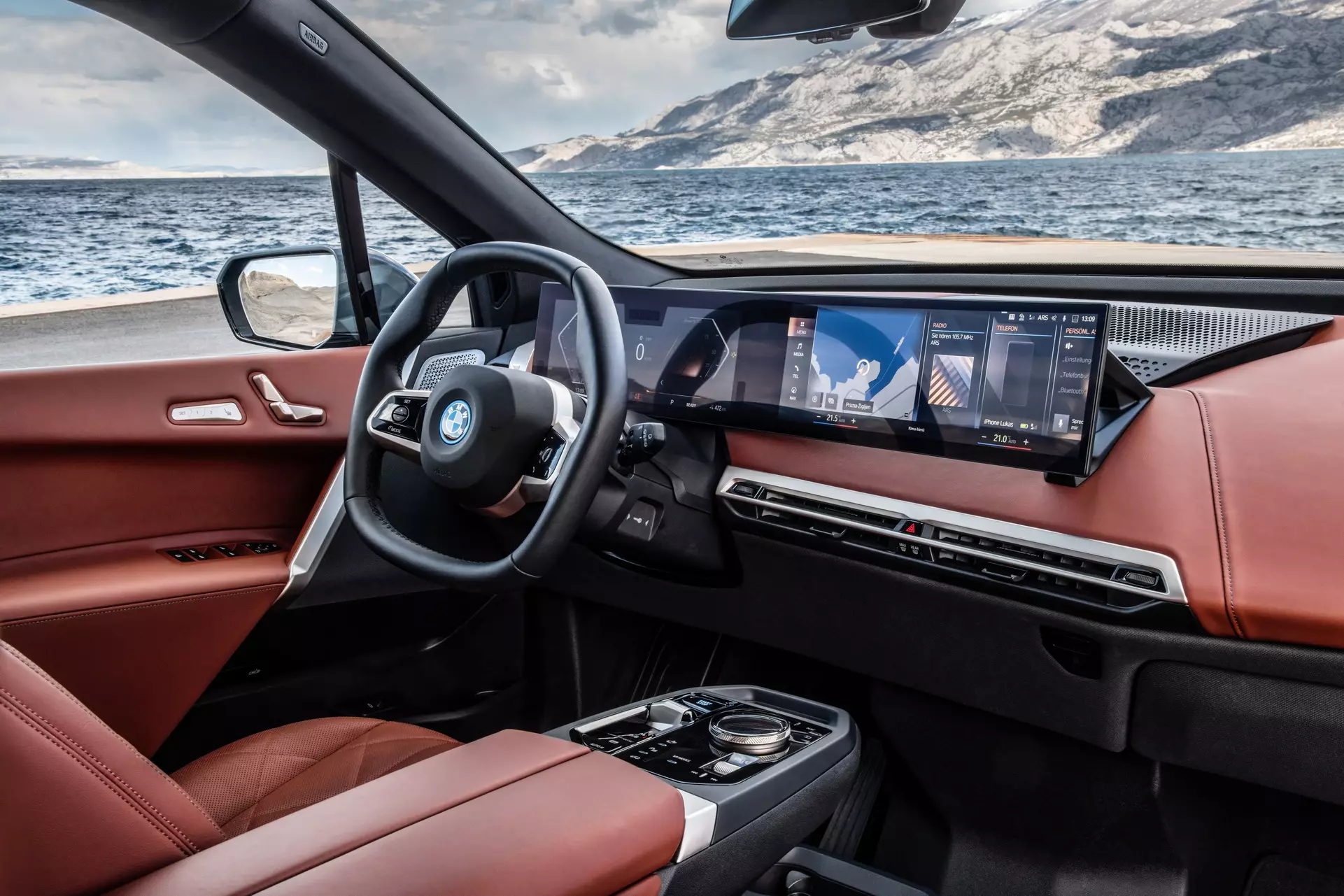
With the exception of the poorer plastic that secures the tablet to the dashboard frame, the materials and construction inspire confidence, even in this pre-series unit, which could well be sent for a concession to be sold.
There are almost no physical controls and there is plenty of free space, not least because the center console and the panel are not connected. In front of the armrest are the transmission selector and the iDrive rotary control (could be crystal, like the audio volume knob) — which, luckily, has been retained — and the drive mode selector.

A new generation operating system (BMW Operating System 8.0), with more computing power, superior connectivity, new features and graphics, as well as a new head-up display, with better integration in the driver's field of vision, should also be highlighted. .
In 2022 the range will be extended with the most powerful version, the iX xDrive M60, which will have more than 600 hp
In this regard, it should be noted that, contrary to what exists in the new Mercedes-Benz S-Class or Volkswagen ID.4/Audi Q4 e-tron, here there are no interactive Augmented Reality graphics floating on the head-up display, as explained by the chief engineer who is visibly loving a few more kilometers aboard “his” iX: “we didn't have any technical limitations to do it, but our choice was to just include it on the central screen because we concluded that we have the graphical animation in the head -up display distracts the driver more”.
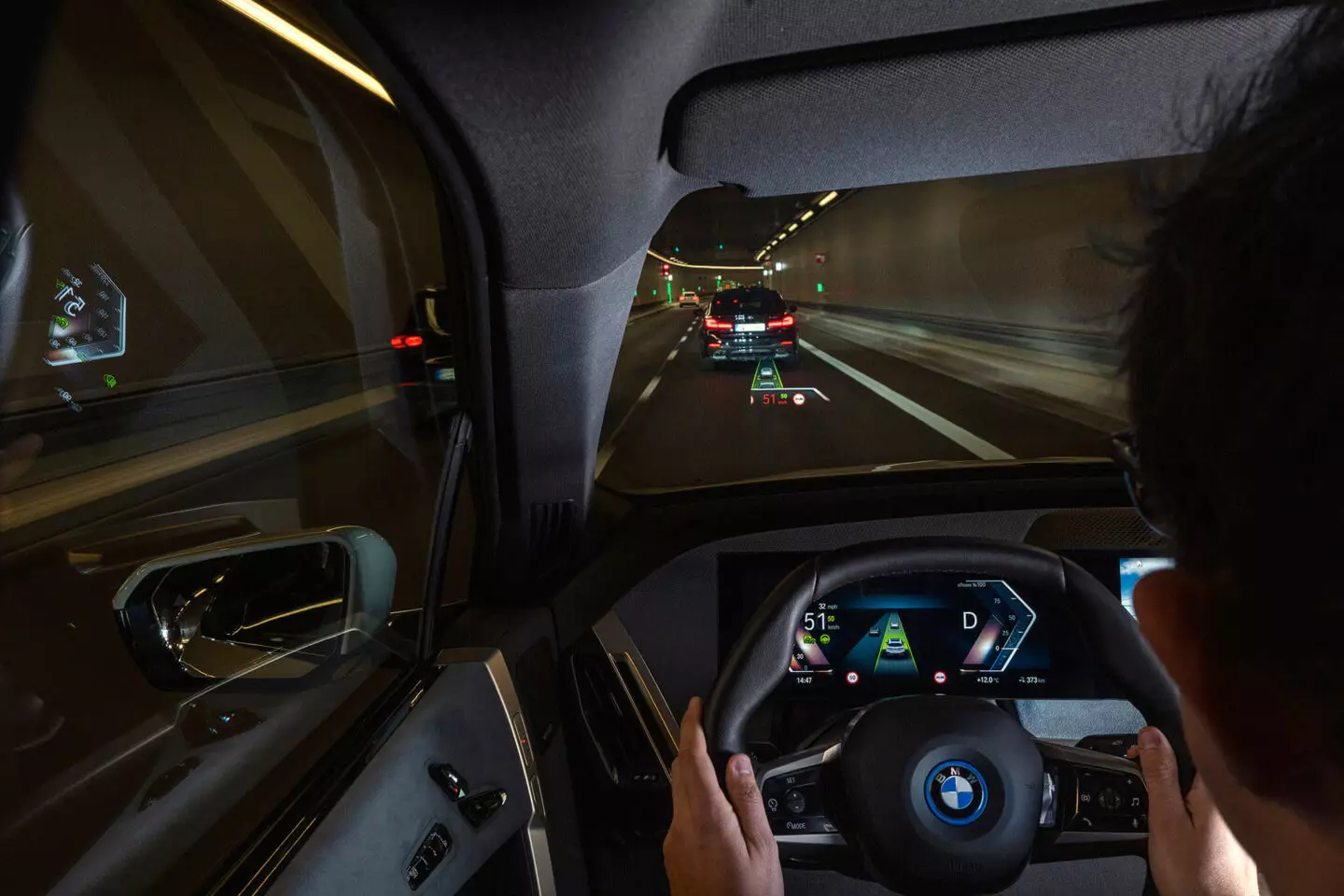
What else? Five seats only (seats can be cooled or heated on the more equipped versions and the front seats can be massaged), plenty of space for rear passengers (and a BMW without intrusion from a transmission tunnel in the second row of seats) and a passenger compartment very luminous, courtesy of the aforementioned large glazed surface and the large panoramic roof (with electrochromic dimming system).
And a curiosity: the buttons to adjust the seats (when electric) are not mounted on the base of the seats, but on the doors, à la Mercedes-Benz…
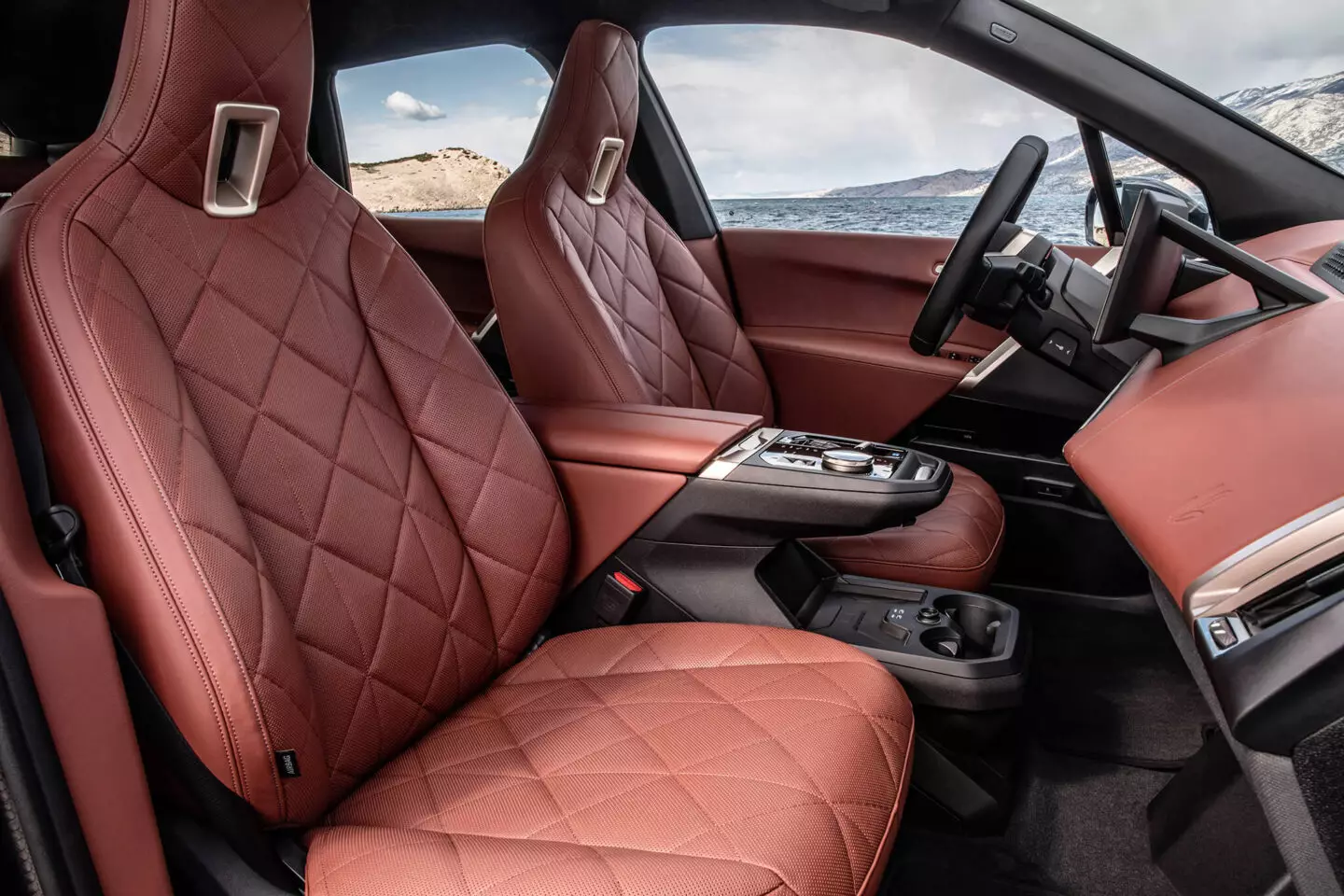
The challenge of dynamics
In addition to all the challenges of electromobility, for BMW there is an additional one: that of transporting into this new era the behavior and driving pleasure that have made it a reference. On the chassis we have known solutions for connecting the wheels (double superimposed triangles at the front and independent multi-arm axle at the rear), but since then almost everything changes, starting with 100% electric propulsion, of course.
An engine at the front with 200 kW (272 hp) and 352 Nm and the other at the rear with 250 kW (340 hp) and 400 Nm in this version we travel here, xDrive50, with a total maximum output of 385 kW (523 hp) and 765 Nm. Then there will be, also at launch later this year, the xDrive40, with 240 kW (326 hp) and 630 Nm, also four-wheel drive as indicated by the letter “x”.

In 2022 the range will be expanded with the most powerful version, the iX xDrive M60, which will have more than 600 hp. The electric motors — produced by BMW itself — are also of the latest and 5th generation, and do not use rare metals, which makes Johann Kistler proud: “the engines are on par with Tesla's and are even better in some aspects”.
To enhance dynamic competence, the wheel slip limiter (ARB, debuted on the i3 and also used on the Series 1) is mounted here on both axles for the first time. Shock absorbers allow height adjustment as standard, with pneumatic suspension (on both axles) and electronic damping optional. Just like the steered rear axle (which turns the rear wheels up to 3.5º). But, “for the sake of energy efficiency”, the 48V active stabilizer bar system was not used.
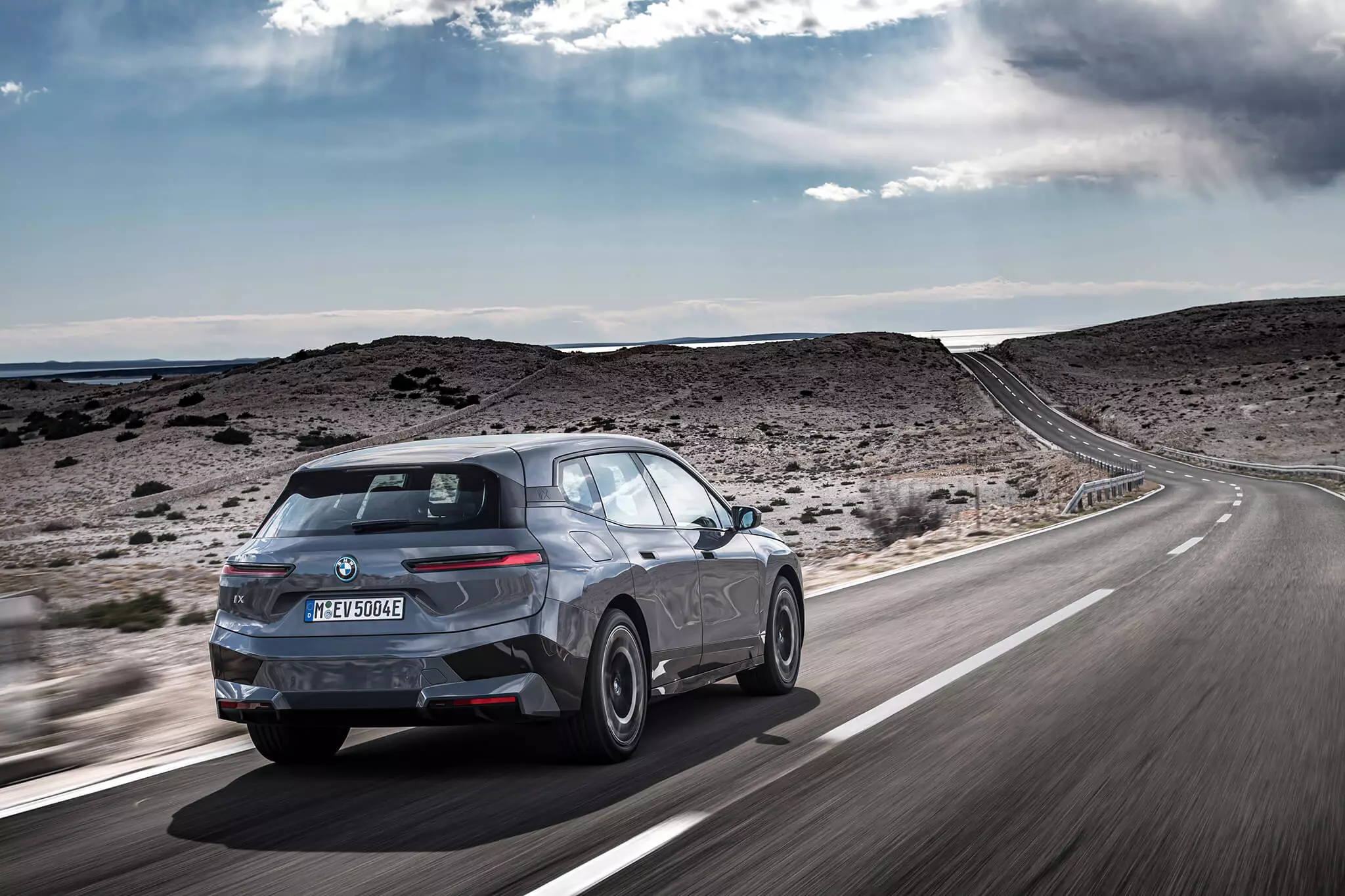
4.6s from 0 to 100 km/h
It's not exactly surprising to say that the iX 50's accelerations are dizzying (for a mastodon of more than 2.5 tons), but within what is normal in this class: the 4.6s from 0 to 100 km/h are enough to paste anyone in the comfortable “armed-in” seats, even if marginally surpassed by the 4.5s of the Audi e-tron S quattro, but faster than the 5.1s spent by the Mercedes-Benz EQC for the same unbridled sprint.Compared to the X5 M50i, this iX spends just 0.3s more from 0 to 100 km/h, which helps to locate your “ballistic” accelerations. And the (limited) top speed of 200 km/h will be enough for any common mortal… non-German.
Find your next car:
Stable and relatively agile
More relevant, perhaps, is to reveal that the silence on board is of a very good level, which results from the high rigidity of the bodywork and constructive rigor, but also due to the silent engines. Only above legal speeds (but legal in Germany) is there any aerodynamic noise coming from the windshield and outside mirrors.
And that the directional rear axle helps make the BMW iX more maneuverable than expected in limited spaces and more agile also on winding roads, where the very good stability of this SUV becomes evident, in good measure because it has such a heavy base ( batteries whose weight will be close to 700 kg).
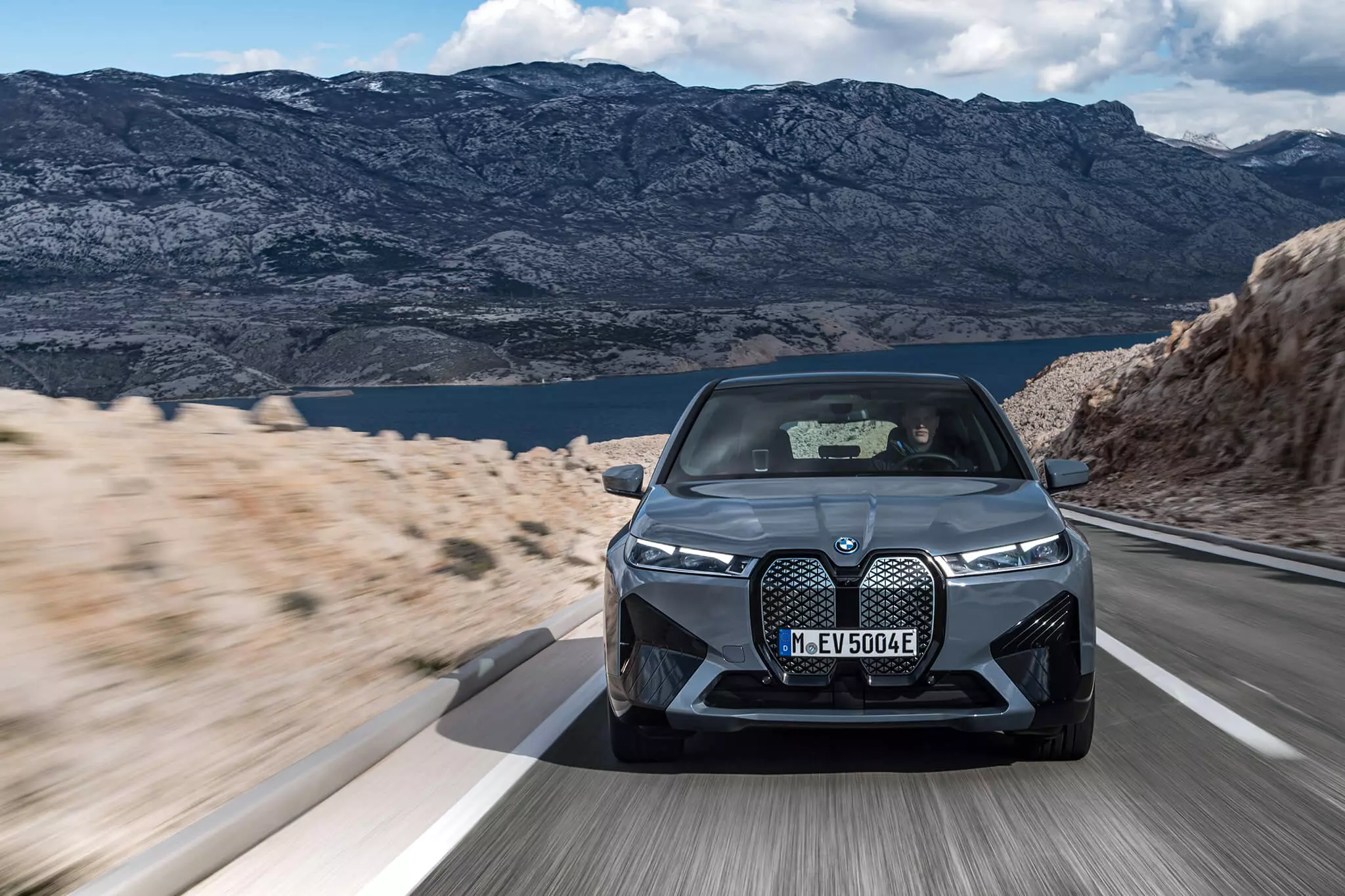
The bearing is therefore always firm, even in Comfort driving mode, but does not cause excessive jolts even when passing high frequency jolts. Traction favors the rear wheels (except on floors with poor grip), but it is permanent and totally variable, with transfers varying with the speed and simplicity with which the electricity flows.
There are four driving modes: Individual, Comfort, Efficiency and Sport, in the latter case lowering the bodywork by 10 mm (which also happens in the other modes above 140 km/h), to favor stability/behavior and reduce consumption.
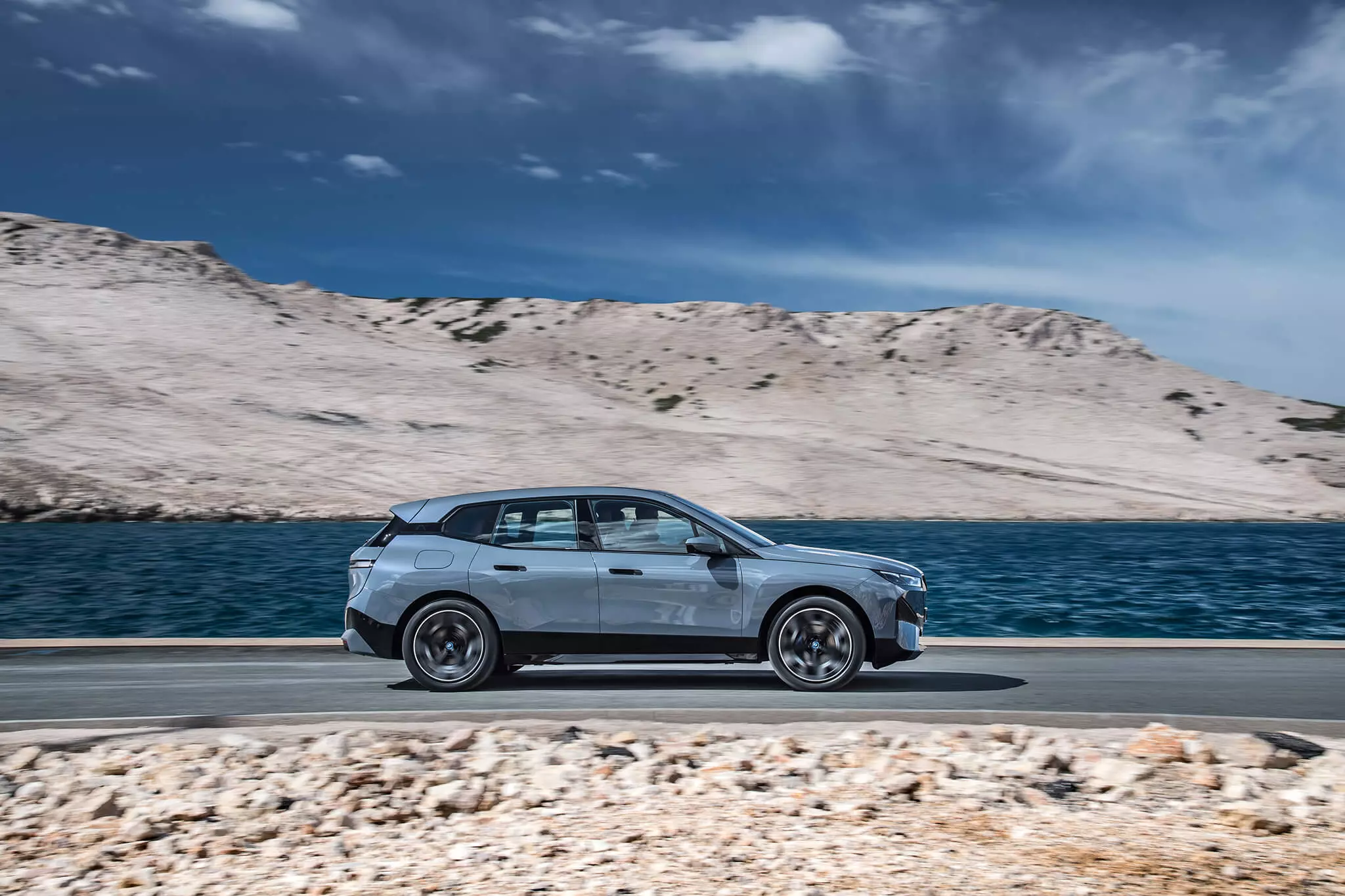
By the way, the Bavarians promise between 549 km to 630 km of autonomy for this version (374 km to 425 km for the smaller battery), from a combined average of 19 to 23 kWh/100 km, but in this test with the pre-series we were well above, registering 26.5 kWh… A discount has to be given because a substantial part of the journey was on the highway, sometimes at 200 km/h.
With a longer urban driving component and resorting to energy recovery in deceleration/braking with the strongest mode — it can be chosen directly with the selector's B position — I think the homologated average will be far from being a mirage.
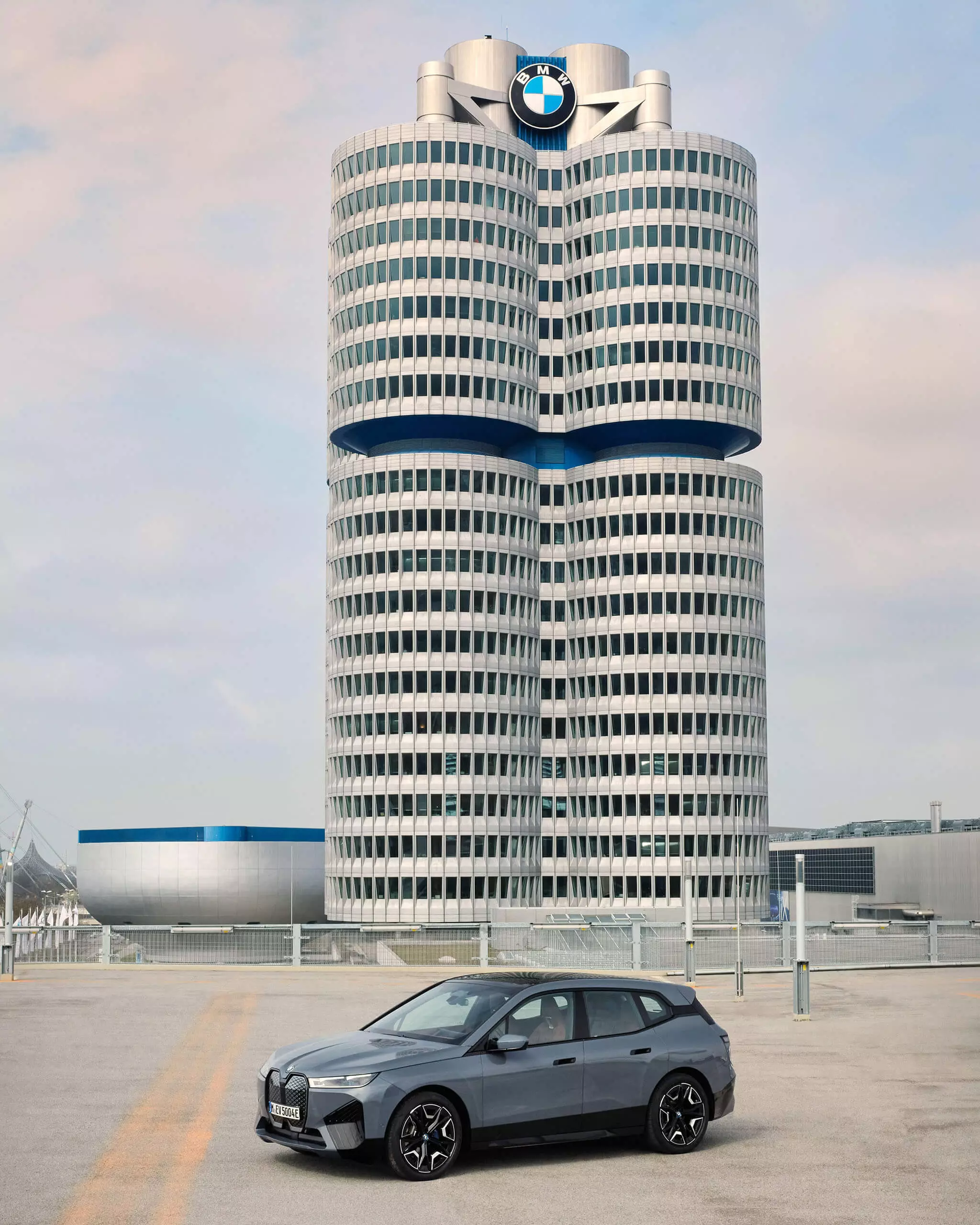
Datasheet
| BMW iX xDrive50 | |
|---|---|
| Motor | |
| Engines | 2 (one per axis) |
| power | Front engine: 200 kW (272 hp); Rear engine: 250 kW (340 hp); Maximum combined power: 385 kW (523 hp) |
| Binary | Front engine: 352 Nm; Rear engine: 400 Nm; Maximum Combined Torque: 765 Nm |
| Streaming | |
| Traction | integral |
| Gear box | Reduction box of a relationship |
| Drums | |
| Type | lithium ions |
| Capacity | 111.5 kWh (105.2 kWh net) |
| Weight | approx. 700 kg |
| Guarantee | 8 years / 160 thousand km |
| Loading | |
| Maximum power in DC | 200 kW |
| Maximum power in AC | 7.4 kW (single-phase)/11 kW (three-phase) |
| loading times | |
| 11 kW (AC) | 0-100%: 11 hours |
| 10-80% 200 kW (DC) | 35 minutes |
| Chassis | |
| Suspension | FR: Independent Overlapping Triangles TR: Independent Multiarm |
| brakes | FR: Ventilated discs; TR: Ventilated Discs |
| Direction | Variable electrical assistance |
| turning diameter | 12.8 m |
| Dimensions and Capabilities | |
| Comp. x Width x Alt. | 4953 mm x 1967 mm x 1695 mm |
| Length between the axis | 3000 mm |
| suitcase capacity | 500-1750 liters |
| Tires | 235/60 R20 |
| Weight | 2585 kg |
| Provisions and consumption | |
| Maximum speed | 200 km/h |
| 0-100 km/h | 4.6s |
| Combined consumption | 23.0-19.8 kWh/100 km |
| Autonomy | 549-630 km |
Authors: Joaquim Oliveira/Press-Inform.
